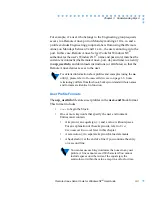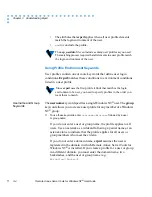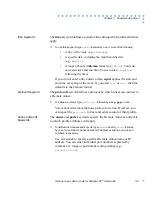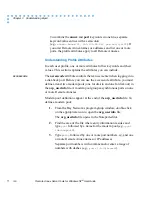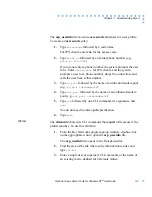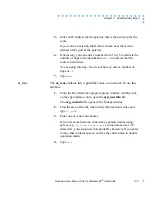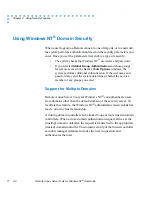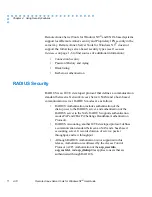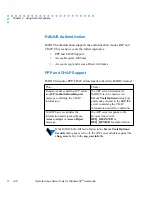
3-17
Chapter 3 Understanding Erpcd
Remote Annex Server Tools for Windows NT
®
User Guide
For example,
annex1
,
annex2: abcxyz
is a simple entry that defines an
encryption key for two Remote Annexes. If you need to continue an entry
on a second line, use the backslash (/) at the end of the first line.
Erpcd first attempts to match complete IP address entries in the
acp_keys file. If erpcd does not find an exact match, it searches
entries that contain wildcards. In either case, erpcd uses the first key
entry it finds.
Creating Encryption Keys
Define encryption keys by setting the acp_key parameter for each Remote
Annex. If the key value is not the same in the acp_keys file and for the
acp_key parameter, the Remote Annex and the server cannot
communicate. In addition, you must set the enable_security parameter
to
Y
to use security features.
To set up encryption keys:
1.
From the Bay Networks program group window, double-click
on the appropriate icon to open the acp_keys file.
The acp_keys file opens in the Notepad editor.
2.
Find the area of the file where entry information resides and
enter Remote Annex names or IP addresses and encryption keys
in the acp_keys file.
3.
Use the Remote Annex admin utility to set the acp_key
parameter for each Remote Annex you listed in the acp_keys
file.
Summary of Contents for Remote Annex
Page 1: ...Part No 166 025 305 Rev A January 1997 User Guide Remote Annex Server Tools for Windows NT ...
Page 4: ...Remote Annex Server Tools for Windows NT User Guide Revision Level History iv ...
Page 10: ...Remote Annex Server Tools for Windows NT User Guide Preface x ...
Page 54: ...Remote Annex Server Tools for Windows NT User Guide Chapter 3 Understanding Erpcd 3 20 ...
Page 78: ...Remote Annex Server Tools for Windows NT User Guide Chapter 4 Using Security Features 4 24 ...

